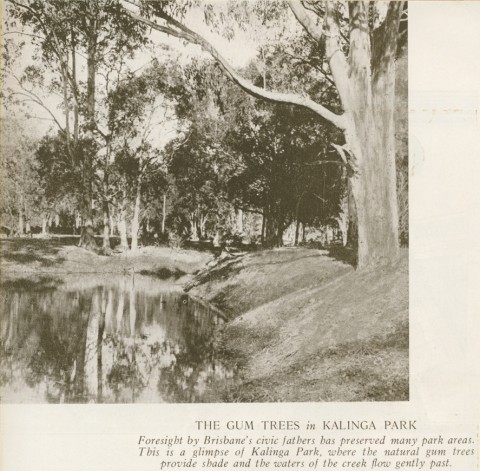Kalinga, a suburban locality in Wooloowin, is seven km north of central Brisbane. Its northern boundary is Kedron Brook, along which is the extensive Kalinga Park. The other side of the Brook is Nundah.
The origin of the name possibly derives from an Aboriginal word ngalinnga, indicating belonging to us.
Kalinga Park was officially opened as a reservation area in 1910 for residents of Nundah, Wooloowin and Eagle Junction. These areas were close to the railway line, and Kalinga remained undeveloped until the interwar years. In 1926 a bus service to Kalinga began, and in 1929 it was replaced by a branch tramline from Lutwyche Road to a terminus in Shaw Road.
Presbyterian and Anglican churches were opened in 1928 and 1934. The Catholic church in Nelson Street included a Franciscan Sisters of Mercy mission in Kedron Lodge (1860), the heritage-listed Colonial Gothic house built for Judge Alfred Lutwyche. Shops ran along Lodge Road, and there was a local cinema continuing into postwar years.
During the war Kalinga Park, in the vicinity of the Toombul railway station, was used as a staging camp. Courtney oval, in the vicinity of Shaw Road, was used by the Australian Special Wireless Group. The community's open space was Melrose Park, which includes the Kalinga bowling club.
Kalinga has a mixture of interwar Queenslander houses and more recent flats. It ceased being a separate suburb and became part of Wooloowin in 1975.
Kalinga's census populations were:
| Census Date | Population |
|---|---|
| 1947 | 7983 |
| 1954 | 9398 |
| 1971 | 7645 |

